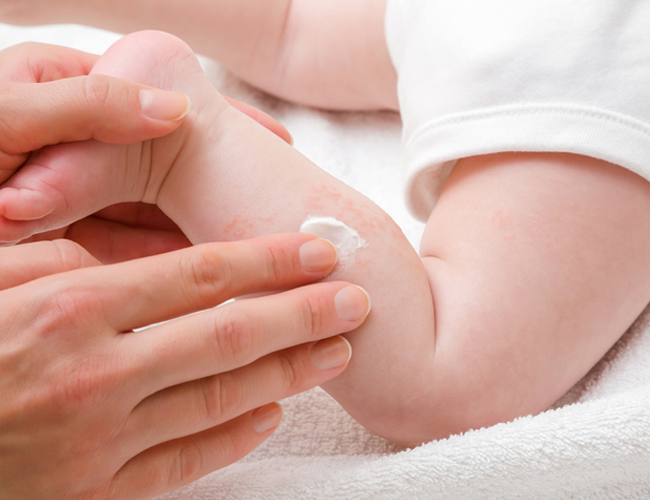Treating and managing your child's eczema
Understand the causes, the different types, and the treatments for your little one to keep eczema under control and your baby comfortable.
According to the South African National Eczema Association (SANEA), eczema is actually an umbrella term for a group of autoimmune diseases that affect the skin. The most common form of eczema is atopic dermatitis, a condition that is characterised by patches of dry, itchy skin. Other types of eczema include discoid eczema; contact dermatitis; varicose eczema; seborrheic eczema; and dyshidrotic eczema.
Eczema is a fairly common disease, and is thought to be hereditary. According to a study published in the National Library of Medicine, the risk of childhood eczema is two or three times higher in children with a maternal or paternal history, irrespective of the area of the body that is affected.
People with asthma and certain allergies also tend to be more susceptible to the issue. Although there is no cure for eczema, there are numerous ways in which it can be managed. If your little one is struggling with dry, itchy skin, here’s what you can do…
IMAGE CREDIT: Getty Images
1. Keep skin moisturised
One of the best things you can do for your baby’s sensitive skin is to moisturise often. Apply a nourishing moisturiser once or twice a day, ideally after a bath. Moisturise after gently patting the skin dry. Then use fragrance-free creams to avoid irritating the skin and choose products with a high oil content.
2. Chat to your doctor
If your baby’s skin appears inflamed and uncomfortable, it’s a good idea to consult with a paediatrician or paediatric dermatologist. They might prescribe a topical corticosteroid or anti-inflammatory ointment to ease discomfort. In some cases, your child’s doctor might recommend an antihistamine to alleviate severe itchiness. If your baby’s rash becomes infected, they might need a course of antibiotics to get the problem under control.
3. Choose breathable fabrics
When dressing your child, go for breathable, natural fabrics like cotton. Certain synthetic materials, such as polyester, tend to irritate sensitive skin and can exacerbate rashes and itchiness. It’s also a good idea to dress your child in cool clothing when the weather is warm – becoming overheated often leads to skin flare-ups.
4. Get rid of allergens
If you find that certain allergens contribute to your child’s flare-ups, you should try to get rid of these in your home. Some of the most common environmental allergens include dust mites, pet fur, pollen and mould. In some cases, food allergies, like cow’s milk, eggs, peanuts and wheat can trigger the symptoms of eczema.
5. Don’t let your little one scratch
It can be hard for children to leave itchy skin alone, but scratching often makes flare-ups worse and can even lead to infection. Try to teach your child not to scratch their skin, particularly with dirty hands. It’s a good idea to keep your little one’s nails as short and clean as possible in case they do touch inflamed skin.

